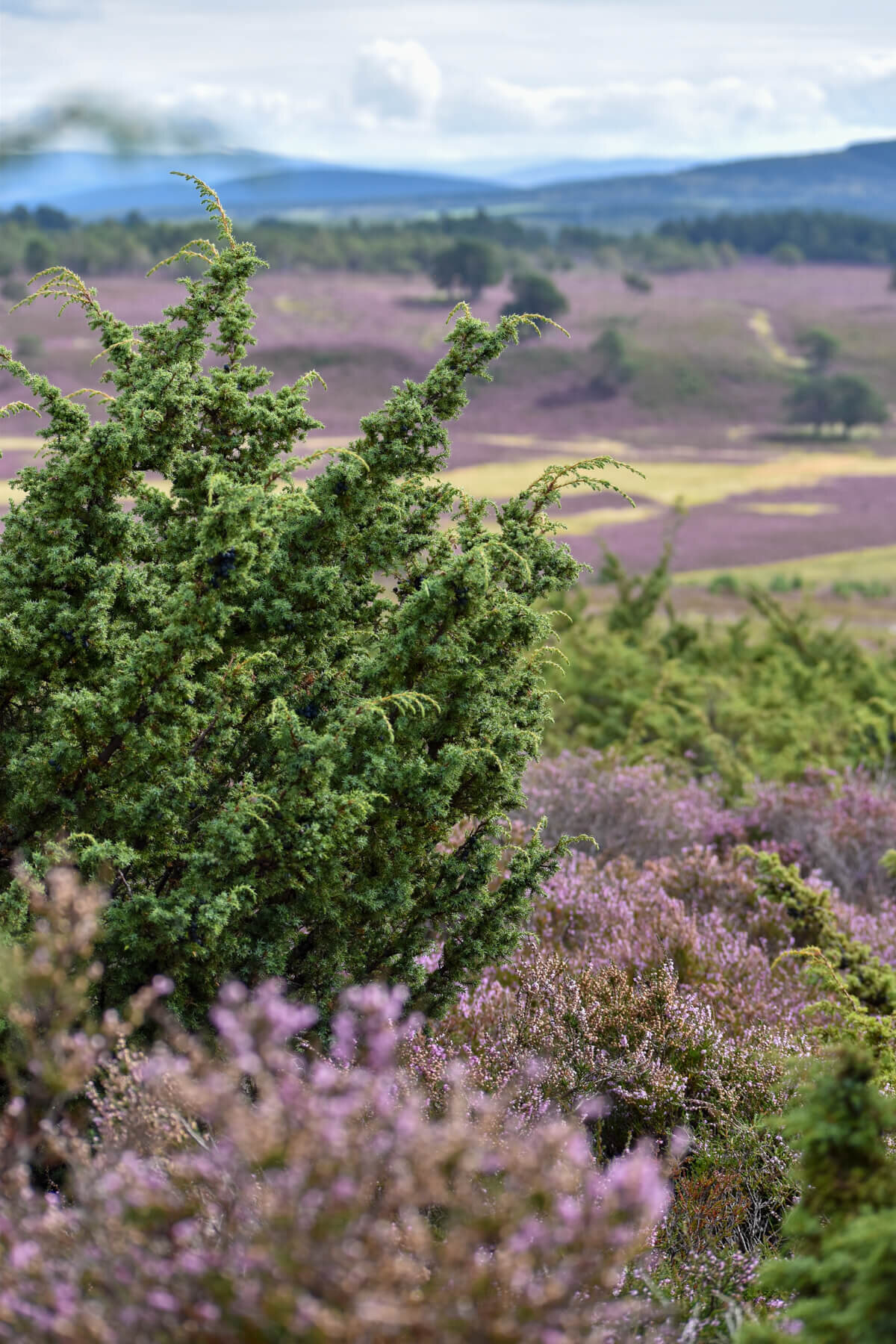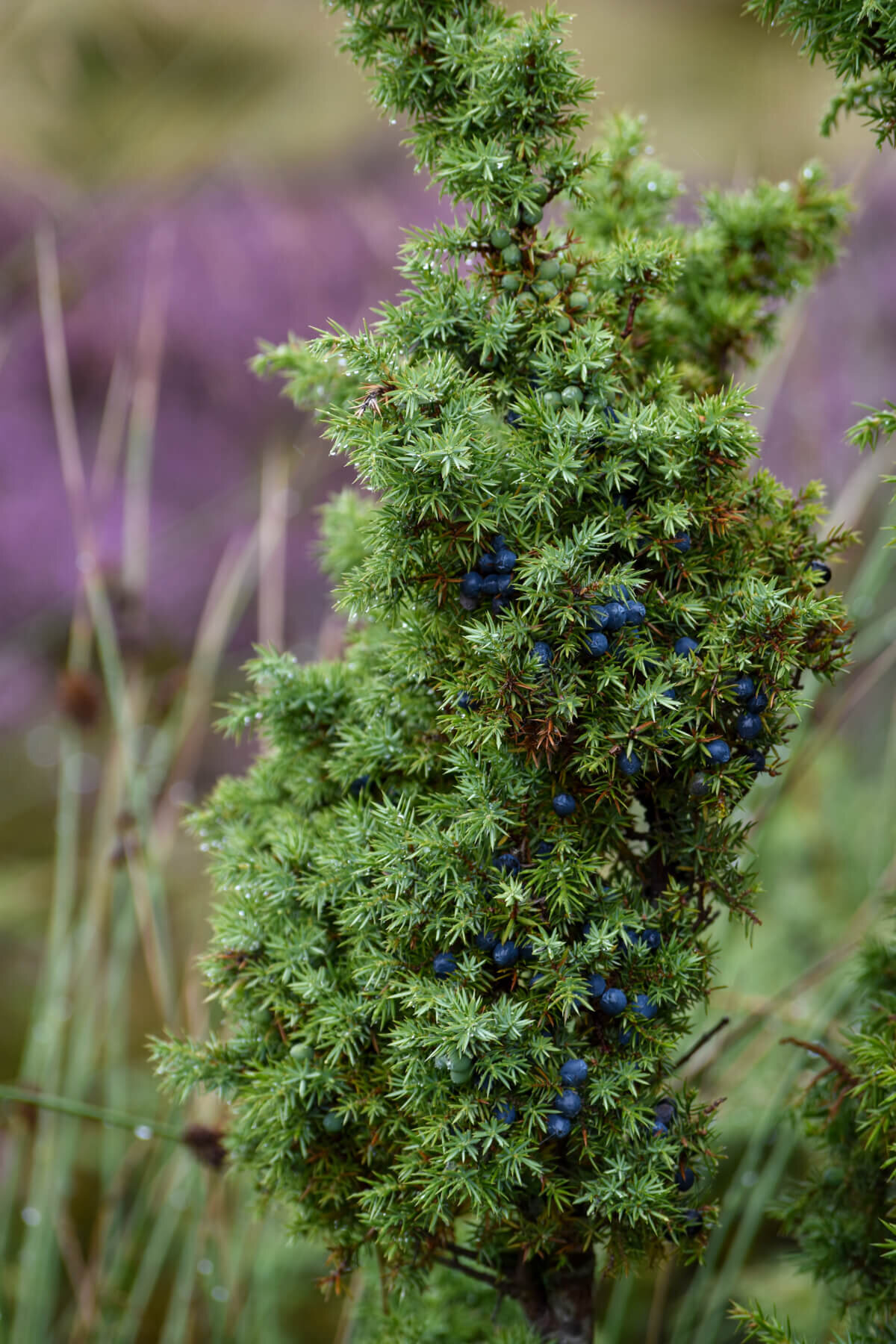Scottish Juniper
Juniper makes gin. There is no debate about that. But what do we know about the plant and the berries that give our favourite spirit its distinctive taste? And even though there is a rich history of Scottish juniper, why do hardly any distillers use it nowadays?
Common Juniper is a native evergreen shrub that grows in wild clusters alongside heather in the remote and rugged moorlands of the Scottish Highlands. In the 17th century, juniper was one of Scotland’s largest exports, sent mainly to Holland for the production of jenever, the forefather to gin. Scottish juniper was once used widely by UK distilleries to make gin, but through a combination of historic over-harvesting and mismanagement, juniper is now considered to be one of the rarest plants in Britain, and most juniper is imported.
One of the main threats that juniper bushes currently face in Scotland is a lack of regeneration. This means that in certain areas, the juniper population consists of mainly old and mature trees rather than having a natural spread across generations. This might give the impression of abundancy; however, it does not guarantee a successful cycle of reproduction as the majority of bushes are too old to produce seeds.
Juniper is a dioecious plant, meaning that it has separate male and female plants. The male tree produces pollen from small flower cones in spring, while the female tree produces cones which we sometimes incorrectly call berries. These take up to 2-3 years to ripen, and the seeds inside are not always viable. Any damage caused by animals, insects or over-harvesting leads to a disruption of the reproductive cycle and therefore regeneration.
The viable seeds need specific conditions for growth. Long-term changes in the landscape pose another risk to regeneration as much of the original juniper habitat has been converted to grassland for grazing. Here, juniper seeds not able to establish, are having to compete with other plants or are simply being grazed. The changes in the landscape have also altered the distribution of water, making some sites wetter and less favourable to juniper, which has been found to prefer well-drained soil.
The abundance of water on these sites has also contributed to the spread of the pathogen Phytophthora austrocedrae, a fungal disease which has been found in Scotland since 2012. It primarily attacks the roots of juniper and causes degradation to brown/orange shrubbery. Despite efforts to isolate the problem, the disease continues to devastate juniper supplies.
Crossbill Distilling is fortunate to collaborate with estates in the Highlands that have an extensive and healthy juniper population. We have returned to tradition, harvesting Scottish juniper, and working with landowners and conservation organisations to maintain a sustainable source of juniper for future generations. Handpicking the berries ourselves, we focus on exercising care and consideration to the surrounding plants and wildlife. This sustainable approach ensures the regeneration of the Juniper bushes for the following years’ harvests.





